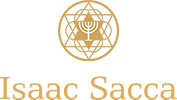Sukkot: the festivity of happiness. By Chief Rabbi Isaac Sacca

Publshed on Thursday, September, 23rd in VisAVis
Sukkot, also known as the “festival of huts”, is characterized by two well-defined symbols: the Sukkah (temporary hut) and the Arbaat Haminim (four species or plant products): Etrog (citron), Lulab (palm branch), Adas (myrtle) and Arabah (weeping willow).
According to tradition, it is a particularly joyous holiday. Why this particularity? Shouldn’t we be happy every day?
To understand the concept of Sukkot as a holiday with unique joy, we have to introduce an idea: Sukkot is a continuation of the festive cycle that begins with Rosh Hashanah, continues with Yom Kippur and Sukkot, and ends with Simchat Torah.
It is all part of the same reconnection process. Rosh Hashanah is judgment and analysis; Yom Kippur is reconciliation and forgiveness; Sukkot is the manifest joy of having completed this healing process of the soul.
After many days of meditation and internal reflection, Sukkot is the time to start expressing joy.
The Torah knows that on Sukkot we rejoice because of the achievements obtained through the effort of meditation and forgiveness, and it invites us to manifest that joy, but it also takes advantage of it to teach us about joy and give us a life lesson about it.
The Torah calls us to build the Sukkah, a “temporary hut.” We leave the comfort of our homes and go to live in a precarious hut to remember that happiness is not found in material goods but in intangible goods: moral values and nobility of spirit, authentic joy.
Chief Rabbi Isaac Sacca
Source: www.visavis.com.ar

